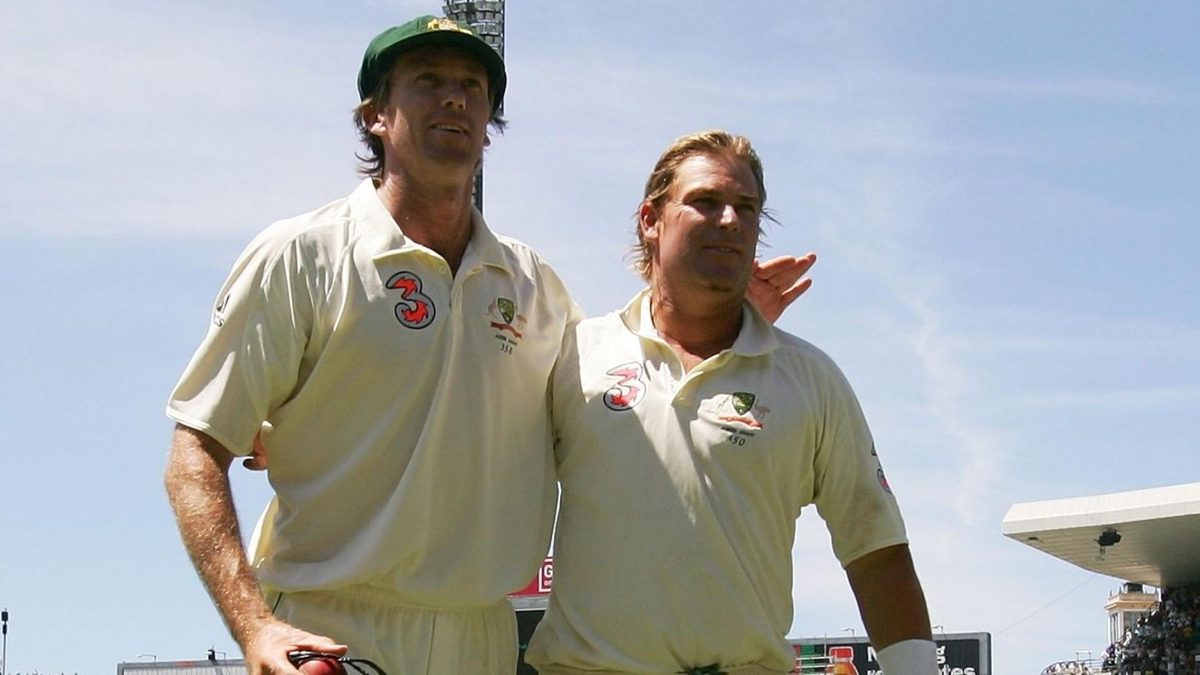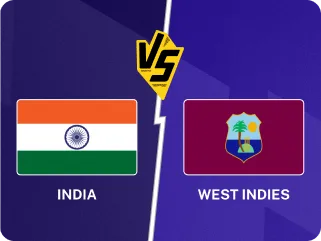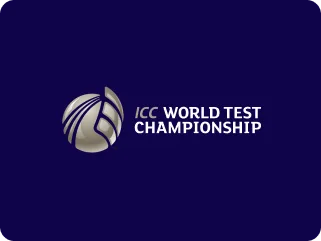
To bow out with a flourish is a cricketer’s dream, but the perfect swansong has eluded many. Here is a list, not exhaustive, of those who managed to bow out on a high.
Tom Richardson (Sydney, 1897/98)
We shall never know for sure how quick Richardson was, but he did earn the tag of ‘right arm fast’ – a rarity in the 19th century, which makes his average of 321 balls per Test match incredible. In his last Test match, he claimed 8-94 in the first innings to give England a 96-run lead. He added two more wickets in the second innings, but 14 wickets were all England managed, and Australia won.
SF Barnes (South Africa tour of 1913/14)
As with Barnes’ entire career (189 wickets at 16.43 from 27 Tests), the numbers tell the story in his farewell series – 49 wickets from four matches at 10.93. When he requested the authorities to pay for his wife’s accommodation, they refused. Barnes did not play the fifth Test – the last before the First World War. Barnes’ 49 wickets and seven five-wicket hauls are still a world record for a single series.
Bill Ponsford (Headingley and The Oval, 1934)
Ponsford had started his Test career with a hundred in each of his first two matches. He bid farewell with exactly the same in his last two. His 181 in Leeds was overshadowed by Don Bradman’s 304 and the rainstorm that saved England. But, at The Oval, he outscored Bradman 266 to 244. Australia made 701 and won by 562 runs to regain the Ashes.
Clarrie Grimmett (South Africa tour of 1935/36)
Like Barnes, Grimmett’s last tour was in South Africa, and his numbers – 44 wickets at 14.59 – were also comparable. During the third Test, he went past Barnes to become the leading wicket-taker in Test cricket. Even at 44, the first great exponent of the flipper was as good as ever, but new captain Bradman did not include him in the side.
Vijay Merchant (Delhi, 1951/52)
With a 5,000-run cut-off, Merchant still holds the highest first-class average (71.64), but his Test average of 47.72 was excellent for a weak side as well. He scored 128 in his last innings in India’s 1946 tour of England, and had not played Test cricket since then. On comeback, he made 154 in the first innings – an Indian record usurped by Vijay Hazare in the same innings – and never played Test cricket again.
South Africans of 1969/70
Graeme Pollock (517 runs at 73.85), debutant Barry Richards (508 at 72.57), Eddie Barlow (360 runs at 51.42, 11 wickets at 23.36), Lee Irvine (353 runs at 50.42), Mike Procter (209 runs at 34.83, 26 wickets at 13.57), Peter Pollock (15 wickets at 17.20), Trevor Goddard (9 wickets at 22.55) – for no fault of theirs but their government’s.
Greg Chappell, Dennis Lillee, and Rod Marsh (Sydney, 1983/84)
Still 68 behind Bradman’s Australian record of 6,996, Chappell had not batted in the Test match when he told the media that he would not play again. He got a standing ovation next day, went past Bradman, and was unbeaten on 79 at stumps at stumps. Lillee, already the owner of the world record for most Test wickets, had taken 4-65 in the first innings. He announced his retirement after the third day’s play.
Chappell finished on 182, and even broke Colin Cowdrey’s record of 120 catches when England batted – after the Australians gave him and Lillee a guard of honour. Lillee rose to the occasion with 4-88. Marsh held six catches in the Test including two off Lillee, and announced his retirement soon after the match (“all my mates have gone”). He finished with a world record 355 dismissals, the same as Lillee’s tally of wickets.
Sunil Gavaskar (Bangalore, 1986/87)
There were already speculations of the first man to 10,000 runs and 30 hundreds not playing after the Pakistan series. On a pitch where the ball turned in the first session of the Test match, batting became increasingly difficult as Iqbal Qasim and Tauseef Ahmed ran riot in defence of 221. As his teammates deserted him, Gavaskar played one of the finest innings of his career, making 96 out of 180 before he was eighth man out. India fell 16 short.
Richard Hadlee (The Oval, 1990)
Four wickets at Trent Bridge, a knighthood, and four more wickets at Lord’s could have unsettled even the most level-headed person, but this was a man who would set his goals ahead of the season, plan his way towards them, and settle for nothing less. Sir Richard Hadlee bowed out of Test cricket with 3-97 and 5-53 (including a burst of 5-17) at The Oval, albeit in a defeat.
Fanie de Villiers (Port Elizabeth, 1997/98)
A late debut restricted de Villiers’ Test career, but his 85 wickets came at an excellent 24.27. He announced he would not play Test cricket again, came on first-change, and took a career-best haul of 6-23 to blow away Pakistan for 106. There was a 2-25 for him in the second innings too.
Mohammad Azharuddin (Bangalore, 1999/00)
South Africa swept the series 2-0. India lost the second Test match by an innings. Azharuddin emerged at 71-3 after India began 321 in arrears, and carved out 102 of the 169 India got during his stay, dominating an outstanding attack that had troubled each of his teammates. He seemed good enough for a few more years, but that was not to happen. The man with a highest score of 199 ended his career won 99 Test matches.
Andy Caddick (Sydney, 2002/03)
Australia were 3-0 up in the series, but an excellent effort from the England fast bowlers and hundreds from Mark Butcher and Michael Vaughan helped England set a target of 452. Australia managed exactly half of that as Caddick ran through them with 7-94 to pick up his first 10-wicket haul. He never played again.
Glenn McGrath, Shane Warne, and Justin Langer (Ashes, 2006/07)
All three had announced that they would hang up their boots after the series. McGrath finished the series with 21 wickets at 23.90; Warne, with 23 at 30.34 to go with 196 runs at 49; and Langer, with 303 runs at 43.28. Between them, they helped Australia inflict the first Ashes whitewash since 1920/21 and somewhat avenge the defeat of 2005.
Shane Bond (Dunedin, 2009/10)
Injuries restricted Bond to 18 Test matches, and the last of these was after a two-year gap, during which he had a stint at the Indian Cricket League. On a pitch with few demons, fast bowlers from both sides produced some outstanding performances, but Bond trumped them all with 5-107 and 3-46, bowling New Zealand to a 32-run win in a modern-era classic. One of the greatest what-ifs of our times.
Muttiah Muralitharan (Galle, 2010)
Muralitharan surprised the cricket fraternity by announcing that the Galle Test match, the first of the series, would be his last. He still needed eight wickets for that 800-mark, and he had taken seven of these out of India’s first 19. Pragyan Ojha and Ishant Sharma then batted for 94 balls as everyone – Muralitharan’s family members, fans, teammates – waited with bated breath. It took an excellent slip catch from Mahela Jayawardene to settle things.
Jacques Kallis (Durban, 2014/15)
Kallis had done little of note in the first of the two Tests in the series. Ahead of the second, Kallis announced the news South Africa had been dreading for some time. There was applause when he came to bowl, and it reverberated across Kingsmead when he reached his hundred. The last of his runs made him the third-highest run-scorer in history.
Shoaib Malik (v England, 2015/16)
Over the years, Pakistan shuffled Malik up and down the order, and he seemed set to retire with 1,606 runs at 33.45 and 21 wickets at 61.47. Then, out of nowhere, he was recalled after five years against England – he began his comeback with a career-best 245. In his last Test match, he took his best innings (4-33) and match (7-59) figures, and his series averages read 48.67 with the bat and 20.72 with the ball.
Brendon McCullum (Christchurch, 2015/16)
The first man to score 150 in a Twenty20 match often scored quickly in Test cricket as well, but the world had to wait until his last Test match for his most iconic onslaught. He came to bat at 32-3 in the 20th over; by the 46th, he was gone – having reached his hundred in 54 balls en route a 79-ball 145. The fastest Test hundred of all time was the swansong the longest unbroken Test career deserved.
Alastair Cook (The Oval, 2018)
After failing to reach 30 in eight innings in the series, Cook announced that the fifth Test match would be his last. He ended his career exactly how he had started off, in Nagpur in 2005/06 – with a fifty and a hundred against India. He finished as the leading scorer in Test cricket among left-handers, and was knighted in the New Year’s Honours.
Special mention: Jason Gillespie (Chattogram, 2005/06)
The wickets had dried up for some time, and with new fast bowlers coming up and Glenn McGrath still around, Gillespie’s days seemed to approach an end. After taking five wickets in Fatullah, Gillespie claimed three wickets in four overs in the first innings in Chattogram. Then he strode out as night-watch, and batted, and batted, and batted… until he got a double hundred and increased his career tally by nearly a fifth of what it used to be.








